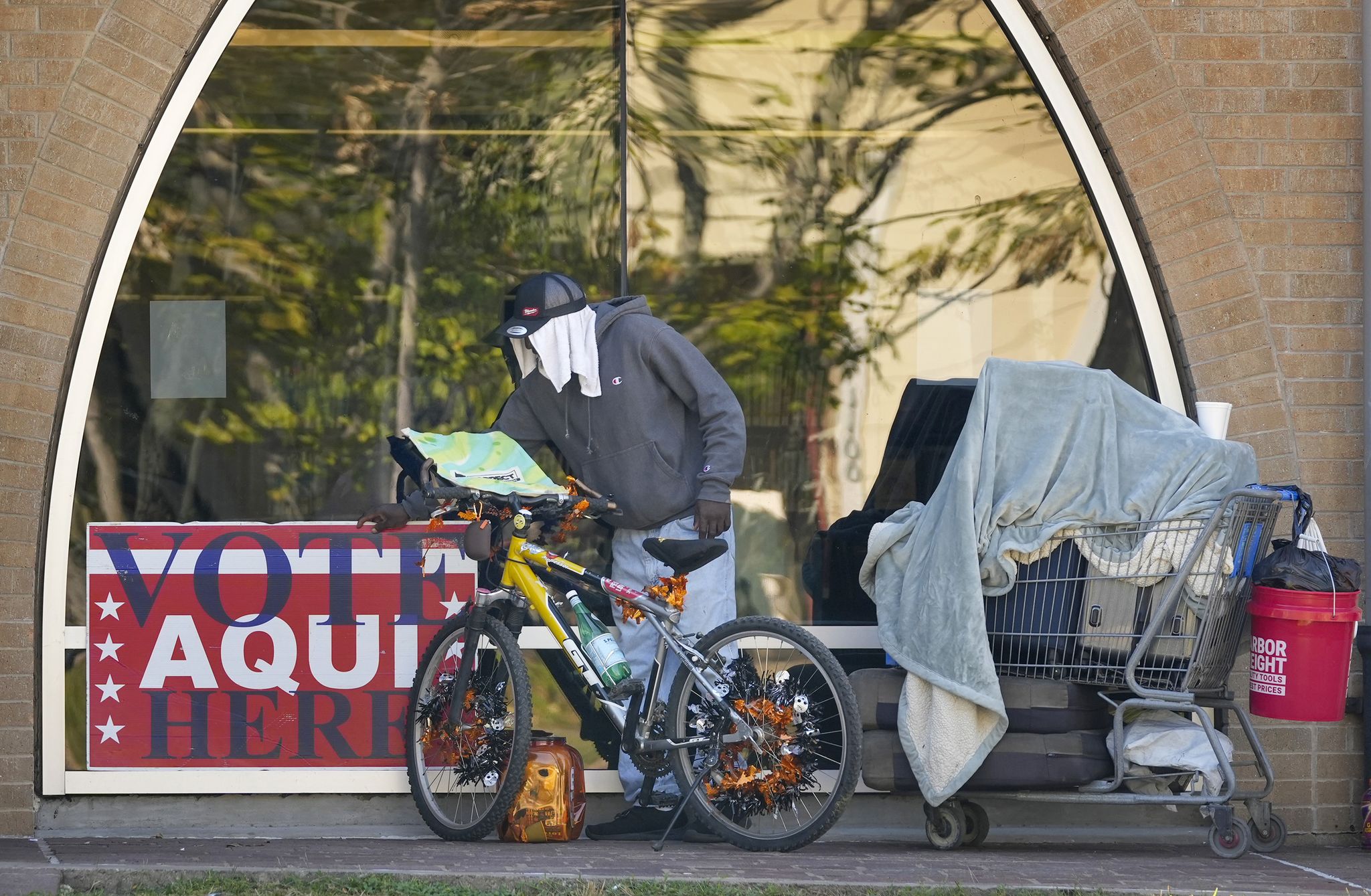Article continues below this ad
Donald Earl, who said he has been homeless for eight years, adjusts a voting sign as he stands with his belongings outside a voting location at the Terrazas Branch Library on Tuesday, Nov. 4, 2025. Austin voters are deciding on Proposition Q, a property tax rate increase that would, in part, fund $20.4 million for up to 350 new rapid rehousing units and expanded emergency shelter beds and services for people experiencing homelessness.
Jay Janner/Austin American-StatesmanTwo other Central Texas school districts — Liberty Hill and Taylor — approved higher tax rates Tuesday to help fund maintenance and operations costs as districts increase salaries and grapple with rising utility and fuel expenses.
However, the Hays district is one of three in Central Texas — along with Blanco and Coupland — where voters rejected higher tax rates.
Hays district officials said the proposed tax rate increase was needed to prevent staff reductions, keep class sizes from growing, and restore the district’s fund balance, which has fallen from $67.5 million in 2020 to $20 million this year.
Article continues below this ad
Even if Hays’ higher rate of $1.2746 per $100 of property valuation would have passed, property tax bills were not expected to rise for the owner of an average home in Hays County. For a home valued at $370,000, the owner would have seen their tax bill decrease by about $275 with the higher rate; without it, the average bill will drop by roughly $538.
Liberty Hill ISD: Approved
Voters in the Liberty Hill district approved a 7-cent increase per $100 of property valuation, after rejecting a similar measure in 2024. About 53.6% of voters backed the measure, according to complete but unofficial results.
Article continues below this ad
The rate increase will generate about $10.9 million for student programming, staff salaries, utilities and safety. District officials said Liberty Hill has already cut $10 million from its budget over the past two years.
Taylor ISD: Approved
Taylor school district voters approved a tax rate of $1.0638 per $100 of valuation, which will bring in an additional $650,000 for classroom instruction, career and technical education, and other student programs. That rate is 4 cents lower than last year’s.
About 59.6% of voters supported the measure.
Article continues below this ad
Blanco ISD: Rejected
Blanco school district voters rejected a 2-cent rate increase that would have generated about $500,000 annually for teacher pay and helped maintain class sizes. Officials have projected an operating fund gap of about $550,000, which could lead to cuts in student programming without the higher rate of $0.878 per $100 of property value.
About 52.5% of voters opposed the measure.
Coupland ISD: Rejected
Coupland school district voters also turned down a 3-cent tax rate increase, which would have generated $241,000 in annual revenue to operate the district’s second campus. The measure failed with 55.8% of the 260 voters opposed.
Article continues below this ad
Under state law, tax rate elections allow school districts to seek voter approval to set a rate higher than the school board can adopt on its own. These elections determine the maintenance and operations tax rate, which funds core expenses such as teacher salaries, classroom programs and building upkeep.
In 2024, voters in the Austin, Manor and San Marcos districts approved higher tax rates, while similar proposals in the Coupland, Liberty Hill, Marble Falls and Seguin districts failed.
